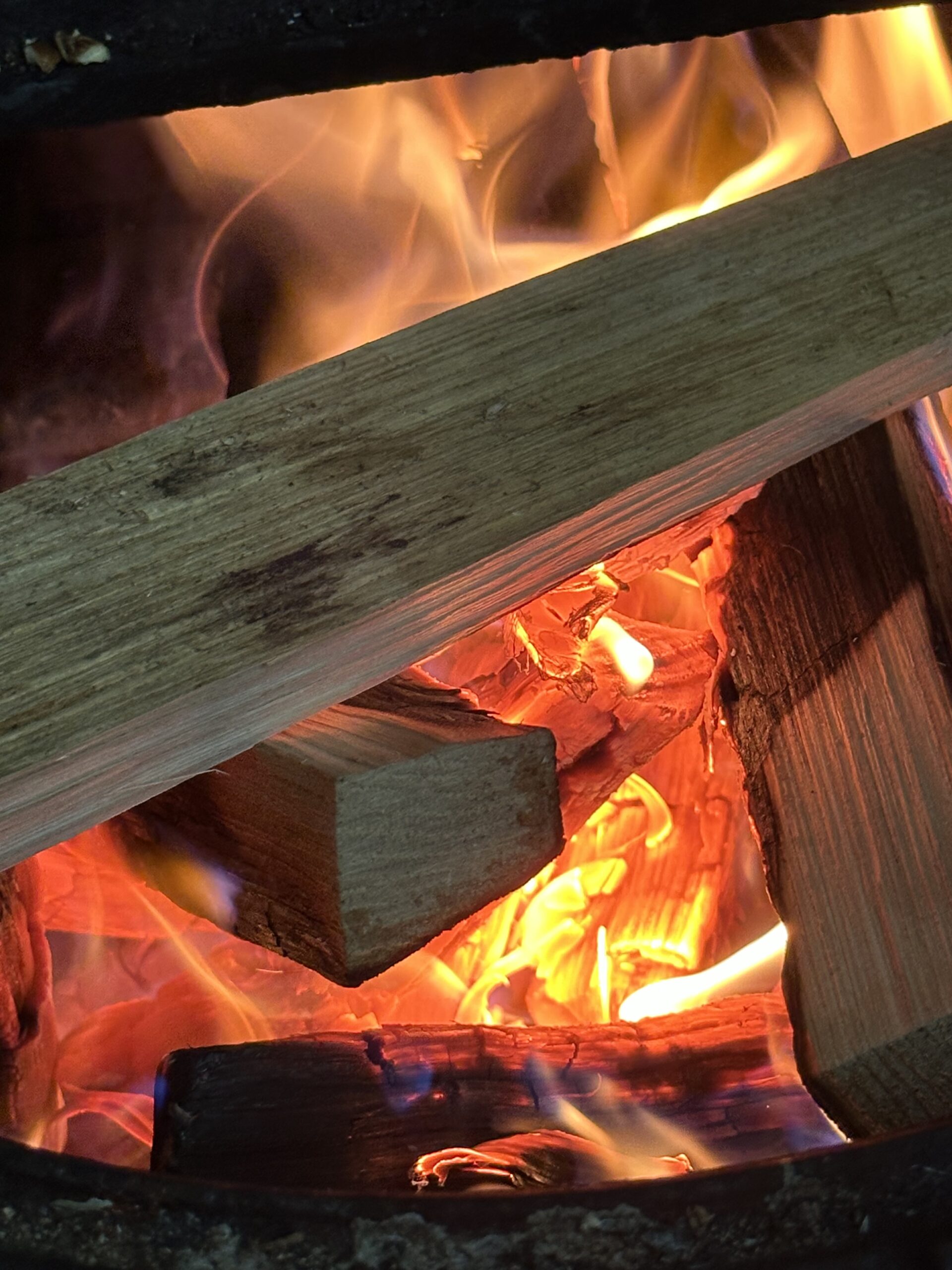
The Fire Triangle
As members of the Kibbo Kift, learning skills as essential as fire building is a core part of our method. At the heart of firecraft lies an understanding of the fire triangle—a fundamental concept about the three key elements necessary for combustion: fuel, heat, and oxygen. Here’s a beginner’s guide to the fire triangle and a list of what can and can’t go on a fire:
1. Fuel: Fuel is the material that undergoes combustion to produce heat and light. In the context of a campfire, fuel can include various organic materials such as wood, leaves, twigs, and dry grasses. When selecting fuel for your fire, opt for dry, dead wood that snaps easily and burns cleanly. Avoid using “green” or wet wood, as it produces excessive smoke and can be challenging to ignite.
2. Heat: Heat is the energy source that initiates and sustains the combustion process. In fire building, heat can be generated through friction, sparks from a flint and steel, or by using matches or a lighter. Once a source of heat is applied to the fuel, it triggers a chemical reaction that releases energy in the form of heat and light, resulting in flames.
3. Oxygen: Oxygen is the third essential component of the fire triangle, acting as the oxidizing agent that allows combustion to occur. Adequate airflow is necessary to supply oxygen to the fire and facilitate the burning process. When building a fire, ensure that there is sufficient ventilation around the fuel and avoid smothering the flames with excessive layers of fuel or debris.
What Can and Can’t Go on a Fire:
- Safe Firewood: Dry, seasoned wood from trees such as oak, maple, or birch is ideal for campfires. Avoid using resinous woods like pine or cedar, as they can produce excessive sparks and resinous smoke.
- Natural Kindling: Twigs, dry leaves, and bark stripped from fallen branches make excellent kindling for starting a fire. Avoid using materials treated with chemicals or synthetic additives.
- Cooking Utensils: Metal pots, pans, and grates can safely be placed over a campfire to cook food. However, avoid using plastic or coated utensils that may melt or release toxic fumes when exposed to heat.
- Prohibited Items: Never burn non-biodegradable materials such as plastics, rubber, or expanding foam. These items release harmful toxins when burned and can damage the environment.
Why have a Campfire?
Not in the steam radiator can we find the spell; not in the water coil; not even in the gas log; they do not reach the heart. Only the ancient sacred fire of wood has power to touch and thrill the chords of primitive remembrance. When men sit together at the campfire they seem to shed all modem form and poise, and hark back to the primitive — to meet as man and man — to show the naked soul.
– The Book of Woodcraft, E. T. Seton
Fire Safety
-
Clear the Area: Before lighting a fire, clear the surrounding area of any debris, dry vegetation, or flammable materials. Ensure there is a clear space around the fire pit to prevent accidental spreading of flames.
-
Supervision: Never leave a fire unattended, even for a moment. If you’re with others, assign a Keeper of the Campfire to attend to the fire at all times and be prepared to extinguish it if necessary.
-
Water and Extinguishing Materials: Have a ready supply of water, sand, or a fire extinguisher nearby in case the fire needs to be extinguished quickly. Always fully extinguish the fire before leaving the area.
-
Build a Contained Fire: Use a designated fire ring or pit to contain the flames and prevent them from spreading. Avoid building fires directly on the ground, especially in dry or windy conditions.
-
Controlled Burning: Maintain a manageable fire size, especially in windy conditions, to prevent sparks from igniting nearby vegetation or structures.
-
Douse Embers: Before leaving the fire site, douse the embers with water and stir them to ensure complete extinguishment. Even seemingly extinguished embers can reignite under the right conditions.
-
Respect Local Regulations: Familiarize yourself with any local regulations or restrictions regarding open fires and adhere to them diligently.
